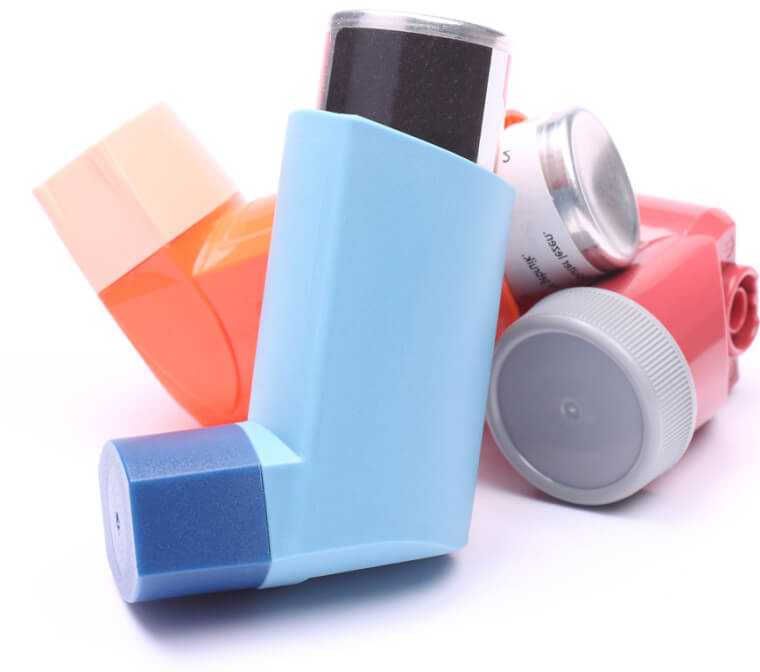How to look after your lungs in spring
When it comes to asthma or chronic obstructive pulmonary disease (COPD), it’s not always easy to pinpoint what causes a flare-up. Most sufferers find that when the seasons change, so do the triggers that set off their symptoms. While it may feel that working out your triggers is an uphill struggle, once you’ve identified them, managing them becomes much easier. So if you battle as winter turns to spring, don’t despair. There are some common triggers that could be making your symptoms worse but read on for simple solutions that may help you keep them under control.

Share on
Temperature changes
While extremes of cold or hot weather are common triggers for many people living with asthma or COPD, sudden changes in temperature can spark symptoms too. These changes can cause inflammation in the airways, leading to flare-ups and with springtime weather being unpredictable, this can make daily life a challenge. With humidity, wind and thunderstorms also having trigger potential, working out which weather patterns cause your symptoms to act up will help you to navigate the season more comfortably.1-3
How to cope
Follow local weather reports
While you can’t avoid triggers altogether, limiting exposure to them can make a big difference. Look at the weather forecast every day so you can plan how to combat any potential triggers. If colder weather irritates your airways, always carry a small scarf with you to cover your nose and mouth in case the temperature drops or it gets windy. Or, if you know that thunderstorms are problematic for you, stay indoors before, during and after a storm.1, 3
See your GP for regular reviews
If you find that changes in the weather are having an effect on your symptoms but are having trouble working out the exact triggers, talk to your GP for advice. Your GP will also check that you’re on the right medicines to benefit you.1
Be consistent with your treatment plan
It can be impossible to predict what spring’s weather will throw at you from one day to the next, so staying on top of your treatment plan is vital when it comes to managing symptoms. To reduce the inflammation in your airways, take your preventer inhaler every day as prescribed and don’t forget to carry your reliever inhaler with you to deal with flare-ups when they happen.1, 4

Spending more time outside/pollen
When the weather starts to warm up, most of us like to spend more time outside and be more active. However, for people with a lung condition, this can really take a toll on their sensitive airways. Pollen can be a major trigger, with tree and grass pollen, which are in the air from March until July, being especially problematic, causing a runny or blocked nose, itchy eyes, shortness of breath and wheezing. If all that wasn’t enough to contend with, being outside and exposed to more air pollution can also exacerbate symptoms and raise the risk of a COPD flare-up or asthma attack.1, 2, 4-7
How to cope
Treat hay fever symptoms
If you think that you may have hay fever, talk to your GP about allergy medication. Using a steroid nasal spray regularly alongside non-drowsy antihistamines when needed will stop allergy triggers from getting out of control.7-9
Check the pollen count
Make a habit of checking your local pollen report every day. If the pollen count is high or heavy winds are forecast, change plans for outside activities and stay inside if you can. You can also speak to your GP about allergy testing if your symptoms are really challenging.1, 5, 8 ,9
Stay indoors
With pollen counts at their highest during the early morning and early evening, it’s a good idea to limit outdoor activity – especially exercise – during these times. If you have to go outside, it might help to wear a face mask to minimise your exposure to pollen and pollution.1, 9, 10
Trap pollen with petroleum jelly
Apply a thin layer around the rim of your nostrils as a way to trap pollen and stop it from entering your nose membranes, where it can cause irritation and trigger symptoms.6, 8

Airborne triggers at home
You don’t have to be outside to be exposed to airborne irritants. Pollen, dust, dust mites and their droppings, mould spores and pet dander are present in our homes and are small enough to get into the lungs, making asthma and COPD symptoms worse. Minimising exposure to these allergens will make curtailing flare-ups a lot less challenging.2, 11
How to cope
Keep windows closed
Lung irritants like pollen and pollution can make their way indoors through open windows, especially if it’s a windy day. Limit this from happening by closing windows on high pollen or pollution days.1, 6, 8, 11
Avoid bringing pollutants in from outside
Pollen, dust and chemicals can also come into our homes on our clothes and skin. To avoid releasing them indoors if you’ve been outdoors, shower and change as soon as you come in. Skip using the washing line and opt for an indoor drying rack or use a tumble dryer instead.6, 8, 12
Do a regular spring clean
Maintaining a clean and dust-free home is essential if airborne triggers are setting off your symptoms. Regular dusting with a damp cloth, vacuuming and washing floors will reduce the levels of pollen, mould spores, dust and dust mites. Invest in a vacuum cleaner with a high-efficiency particulate air (HEPA) filter to trap allergens rather than sending them back into the air and wear a dust mask while you clean to lessen airway irritation.6, 9, 12, 13
Wash bedding weekly
Dust mites are tiny insects that live in dust and in bedding, mattresses, carpets and curtains, and are a common trigger for people with lung conditions. Although you can’t get rid of dust mites and their droppings completely, using anti-allergy covers on your bed and washing bedding in a 60 degree wash every week will decrease their numbers.9, 12
AER-IE-00014 | March 2022
1. Asthma UK. Weather. 2020. Available at: https://www.asthma.org.uk/advice/triggers/weather/ (accessed January 2022).
2. NICE. Chronic obstructive pulmonary disease in over 16s: diagnosis and management. NG115. Published 2018, updated 2019. Available at: https://www.nice.org.uk/guidance/ng115 (accessed January 2022).
3. NHS. Living with chronic obstructive pulmonary disease (COPD). 2019. Available at: https://www.nhs.uk/conditions/chronic-obstructive-pulmonary-disease-copd/living-with/ (accessed January 2022).
4. NICE. Asthma: diagnosis, monitoring and chronic asthma management. NG80. Published 2017, updated 2021. Available at: https://www.nice.org.uk/guidance/ng80 (accessed January 2022).
5. British Lung Foundation (BLF). Looking after your lungs in hot weather. 2021. Available at: https://www.blf.org.uk/support-for-you/hot-weather (accessed January 2022).
6. NHS. Hay fever. 2020. Available at: https://www.nhs.uk/conditions/hay-fever/ (accessed January 2022).
7. Asthma UK. Pollen, hay fever and asthma. 2020. Available at: https://www.asthma.org.uk/advice/triggers/pollen/ (accessed January 2022).
8. Asthma UK. Hay fever treatments. 2020. Available at: https://www.asthma.org.uk/advice/inhalers-medicines-treatments/other/hay-fever/ (accessed January 2022).
9. NICE. CKS. Allergic rhinitis: Scenario: management. 2021. Available at: https://cks.nice.org.uk/topics/allergic-rhinitis/management/management/ (accessed January 2022).
10. Dror AA et al. Reduction of allergic rhinitis symptoms with face mask usage during the COVID-19 pandemic. J Allergy Clin Immunol Pract 2020; 8: 3590-3593. https://pubmed.ncbi.nlm.nih.gov/32889221/
11. Asthma UK. Indoor asthma triggers. 2020. Available at: https://www.asthma.org.uk/advice/triggers/indoor-environment/ (accessed January 2022).
12. Asthma UK. Dust mites. 2020. Available at: https://www.asthma.org.uk/advice/triggers/dust-mites/ (accessed January 2022).
13. Wilson JM, Platts-Mills TAE. Home environmental interventions for house dust mite. J Allergy Clin Immunol Pract 2018; 6: 1-7. https://pubmed.ncbi.nlm.nih.gov/29310755/

